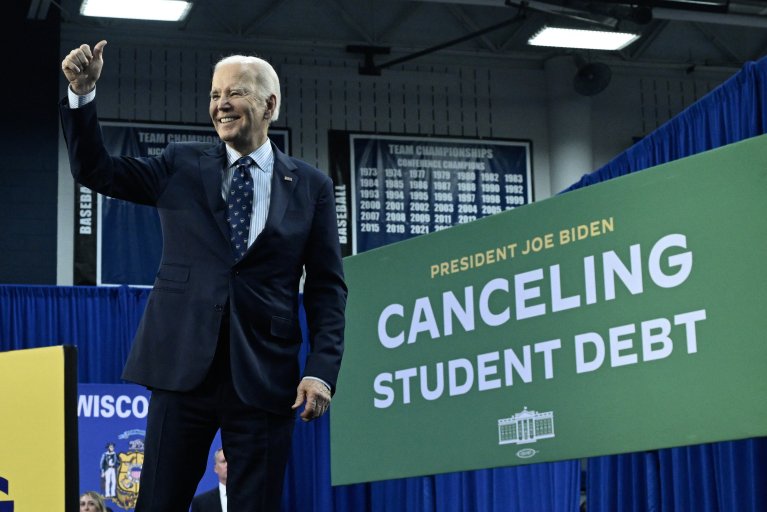As an instructional coach and former virtual coach, I have observed countless classrooms across the nation, and it’s disheartening to see how many of our well-intentioned practices are slowly killing student curiosity. It’s a subtle process, but the cumulative effect is turning learning into a lifeless experience.
I’ve observed five major ways we’re unintentionally stifling curiosity and issue a call to action for educators, administrators, and policymakers to join the curiosity revolution:
Excessive Test Preparation
When we bombard students with test prep, we’re sending the message that learning is just a means to an end. Students become disengaged and lose their desire to explore and discover. To foster curiosity, we must find a balance between test preparation and nurturing a love for learning.
Teacher action: Incorporate inquiry-based learning, encourage student questions, and emphasize real-world applications to help strike this balance. Give students opportunities to delve deeper into topics that interest them and connect their learning to the world around them.
Administrator action: Support teachers in finding this balance by providing professional development opportunities on integrating curiosity-driven learning experiences with test preparation.
Lecture-Heavy Instruction
Relying primarily on lectures deprives students of opportunities to think for themselves and develop critical-thinking skills. When students are constantly spoon-fed information, they may become passive learners who are less likely to ask questions or explore ideas on their own.
Teacher action: Replace a portion of lecture time with interactive activities, such as small-group discussions or thought-provoking debates. These student-centered exercises allow learners to actively engage with the material, explore ideas, and share their perspectives with peers. Regularly encourage the class to ask questions and voice their opinions. Create a safe space for students to express themselves and demonstrate that curiosity and independent thinking are valued.
Administrator action: Provide teachers with resources and training on incorporating interactive, student-centered teaching methods into their classrooms. Encourage collaboration among teachers to share best practices and ideas for fostering students’ curiosity.
Overreliance on Computer Programs
Educational technology programs that focus primarily on boosting test scores can hinder authentic learning experiences. When we stick kids in front of screens for hours on end and don’t provide them with authentic, hands-on learning, we’re not doing them any favors. While technology is valuable, it should be used in moderation and in conjunction with other teaching methods.
Teacher action: Dedicate time once or twice a week for students to engage in meaningful discussions about their experiences with educational technology programs. Encourage students to share their explorations, pose questions, and discuss their learning with a partner. Facilitate discussions on challenges they have encountered and collaborate with peers to find solutions.
Administrator action: Ensure that educational technology programs are not the sole focus of instruction. Provide teachers with guidelines on effectively integrating and balancing technology with hands-on learning experiences and discussions.
Disconnection From Students’ Lives
When the curriculum has zero connection to students’ lives or needs, it’s no wonder they tune out. Learning in a vacuum is not only boring, it’s also ineffective. If we want students to be invested in their education, we need to make sure that what they’re learning is relevant and meaningful to them.
Teacher action: Begin each unit with a short inquiry task that connects the core concept to students’ lives and experiences. Develop open-ended questions or tasks that encourage students to explore concepts while expressing their own ideas and experiences, creating deeper connections and making learning more meaningful.
Administrator action: Encourage teachers to collaborate with colleagues from different subject areas to develop interdisciplinary projects or common concepts that demonstrate real-world applications of what is being taught. Support teachers in creating a curriculum that is relevant and connected to students’ lives.
Worksheet Overload
Worksheets can be useful for practicing skills, but when they’re used excessively, they can be mind numbing and repetitive. When students are constantly given worksheets that require little more than filling in blanks or following a set of instructions, they may become disengaged and lose their desire to learn.
Teacher action: Provide engaging, interactive learning experiences that challenge students to think critically and creatively. For example, in a math class, challenge students to design a dream house using grid paper with a given set of constraints, allowing them to explore concepts of area and perimeter in a unique, interactive way.
Administrator action: Encourage teachers to move away from worksheet-driven instruction and provide them with resources and support to implement interactive, curiosity-driven learning experiences.
The White House recently called for schools to create a “culture of attendance” to combat chronic absenteeism. The effort is a step in the right direction, but attendance is just the beginning. As educators, we must join the curiosity revolution and create learning experiences that truly inspire our students. By prioritizing inquiry-based learning, making learning relevant, incorporating hands-on activities, fostering a safe and supportive environment, and providing choice and autonomy, we can nurture our students’ natural curiosity and help them develop a lifelong love for learning.
It’s time to ditch the worksheets and test prep and focus on creating meaningful, engaging learning experiences that truly inspire our students. Are you ready to join the curiosity revolution? Let’s work together to nurture our students’ natural curiosity and watch them thrive!
Disclaimer: The copyright of this article belongs to the original author. Reposting this article is solely for the purpose of information dissemination and does not constitute any investment advice. If there is any infringement, please contact us immediately. We will make corrections or deletions as necessary. Thank you.







